Департамент образования Ярославской области
государственное профессиональное образовательное автономное учреждение Ярославской области Ярославский промышленно-экономический колледж
кафедра общегуманитарных дисциплин
МЕТОДИЧЕСКОЕ ПОСОБИЕ
ПО АНГЛИЙСКОМУ ЯЗЫКУ
Тексты для специальности «Информационные системы»
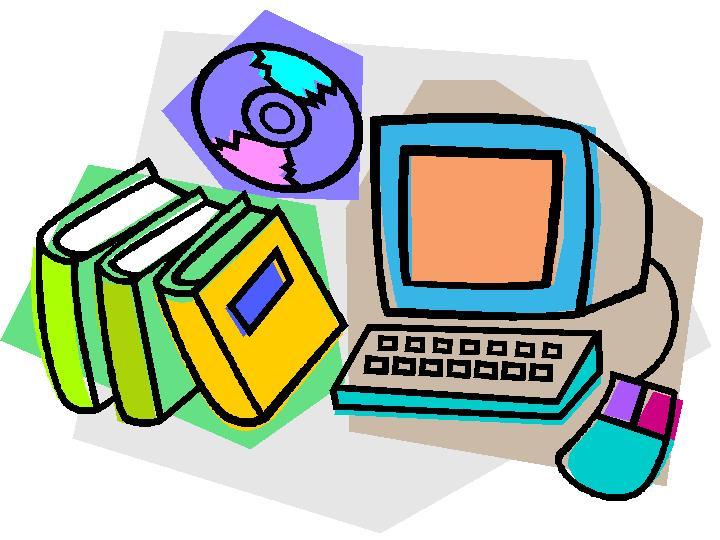
Автор-составитель: Лапина А.О.
Ярославль, 2016 г.
|
| Рекомендовано методическим советом колледжа в качестве методического пособия для студентов по дисциплине «Английский язык» по специальности 18.02.01 «Информационные системы» |
Автор – составитель:
А.О. Лапина – преподаватель ГПОАУ ЯО Ярославского промышленно – экономического колледжа.
Рецензент: Дорофеева Надежда Александровна - учитель английского языка МКОУ СОШ №2 с. Князе-Волконское-1.
Редактор: Прудова Н.Ю. – руководитель методического отдела ГПОАУ ЯО Ярославского промышленно-экономического колледжа.
Методическое пособие предназначено для студентов очной формы обучения для успешного освоения материала за 3 курс обучения английскому языку. Включает пояснительную записку, методические указания по изучению материала, тексты, упражнения, новые лексические единицы.
ПОЯСНИТЕЛЬНАЯ ЗАПИСКА 4
1. APPLICATION OF COMPUTERS 5
2. APPLICATION OF PERSONAL COMPUTERS 5
3. INFORMATION-DEPENDENT SOCIETY. 6
4. HISTORY OF COMPUTERS 8
5. THE FIRST COMPUTERS 11
6. WHAT IS A COMPUTER? 13
7. DATA PROCESSING CONCEPTS 16
8. COMPUTER SYSTEMS: AN OVERVIEW 19
9. DIGITAL COMPUTERS 21
10. FUNCTIONAL UNITS OF DIGITAL COMPUTER 24
11. HARDWARE, SOFTWARE, AND FIRMWARE 25
12. COMPUTER PROGRAMMING 27
13. WHAT IS A COMPUTER? TYPES OF COMPUTERS. 28
14. WHAT IS AN APPLICATION? 35
15. WORD PROCESSORS 37
16. COMPUTER GRAPHICS 39
17. WHAT IS WEB DESIGN? 42
18. APPEARING OF THE INTERNET 43
19. INTERNET SERVICE AND INTERNET SAFETY 45
20. THE WORLD’S FIRST WEB SITE 49
СПИСОК ИСПОЛЬЗОВАННЫХ ИСТОЧНИКОВ 51
Методическое пособие предназначено для студентов специальности 18.02.01 «Информационные системы», и содержит теоретический материал, тексты по специальности на английском языке, задания к ним, упражнения по грамматике, справочный материал.
Основной целью изучения учебной дисциплины «Иностранный язык» в учреждениях среднего профессионального образования является практическое владение иностранным языком для использования его в общении при решении бытовых, учебных и социокультурных задач. Именно акцент на лексику позволит обогатить терминологический словарь и будет способствовать развитию языковых компетенций.
Цель данного методического пособия ввести студентов в область иноязычного письменного и устного общения по специальности и помочь усвоению программы, в дальнейшем для сдачи дифференцированного зачёта.
В результате изучения данного пособия студент должен:
знать и понимать лексику по специальности;
переводить тексты;
отвечать на вопросы к нему;
выполнять задания по темам;
знать грамматический материал.
Методическое пособие также нацелено на развитие и закрепление монологических навыков и умений, необходимых для чтения и понимания текстов.
- APPLICATION OF COMPUTERS
Read and translate the text.
At present a great deal of the work force of most countries is engaged in creating, processing, storing, communicating and just working with information. Computers have become commonplace in homes, offices, stores, schools, research institutes, plants.
The use of computers in business, industry and communication services is widespread today. Computer- controlled robots are able to improve the quality of manufactured products and to increase the productivity of industry. Computers can control the work of power stations, plants and docks. They help in making different decisions and in management of economy.
The work of banks depends upon computer terminals for millions of daily operations. Without these terminals, records of deposits and withdrawals would be difficult to maintain, and it would be impossible to make inquiries about the current status of customer accounts.
Computers form a part of many military systems including communication and fire control. They are applied for automatic piloting and automatic navigation. Space exploration depends on computers for guidance, on-board environment and research.
Computers find application in astronomy and upper atmosphere research. Weather forecasting, library information services can benefit from computers too.
It is interesting to note that computers are widely used in medicine. They became valuable medical diagnostic tools. Computers are used for optical scanning and image processing, ranging from pattern recognition to image processing. Technicians can operate computer tomography scanners which combine x-rays with computer technology to give sectional views of the body of patients. The views then can be combined into a single image shown on the screen.
It should be noticed that learning on a computer can be fun. Students spend more time with computer- aided instruction performing the assigned task, as compared with conventional classroom.
At last air traffic control is impossible without computer application. It fully depends upon computer- generated information.
Many other uses of computers that we cannot imagine at present will become commonplace in the transition from an industrial to postindustrial, or information society.
- APPLICATION OF PERSONAL COMPUTERS
Read the text and answer the question: How do you use your computer?
Personal computers have a lot of applications, however, there are some major categories of applications: home and hobby, word processing, professional, educational, small business and engineering and scientific.
Home and hobby. Personal computers enjoy great popularity among experimenters and hobbyists. They are an exciting hobby. All hobbyists need not be engineers or programmers. There are many games that use the full capabilities of a computer to provide many hours of exciting leisure-time adventure.
The list of other home and hobby applications of PCs is almost endless, including: checking account management, budgeting, personal finance, planning, investment analyses, telephone answering and dialing, home security, home environment and climate control, appliance control, calendar management, maintenance of address and mailing lists and what not.
Word processing. At home or at work, applications software, called a word processing program, enables you to correct or modify any document in any manner you wish before printing it. Using the CRT monitor as a display screen, you are able to view what you have typed to correct mistakes in spelling or grammar, add or delete sentences, move paragraphs around, and replace words. The letter or document can be stored on a diskette for future use.
Professional. The category of professional includes persons making extensive use of word processing, whose occupations are particularly suited to the desk-top use of PCs. Examples of other occupations are accountants, financial advisors, stock brokers, tax consultants, lawyers, architects, engineers, educators and all levels of managers. Applications programs that are popular with persons in these occupations include accounting, income tax preparation, statistical analysis, graphics, stock market forecasting and computer modeling. The electronic worksheet is, by far, the computer modeling program most widely used by professionals. It can be used for scheduling, planning, and the examination of what if situations.
Educational. Personal computers arc having and will continue to have a profound influence upon the classroom, affecting both the learner and the teacher. Microcomputers arc making their way into classrooms to an ever-increasing extent, giving impetus to the design of programmed learning materials that can meet the demands of student and teacher.
- INFORMATION-DEPENDENT SOCIETY.
Study new words and word-combinations.
computer literacy — компьютерная грамотность;
problem-solving device — устройство, обеспечивающее решение задачи;
be aware of — понимать, сознавать;
opportunity — возможность;
basics — основы;
application — применение; использование;
to restate — пересмотреть, переосмыслить;
significant — значительный;
achievements — достижения;
computing — вычисление; счет; работа на компьютере;
to embrace — охватывать;
dimension — измерение;
instruction — команда, инструкция, указание;
to direct the operation — направлять работу;
to process — обрабатывать;
subscription magazine — журнал по подписке;
data processing system — система обработки данных;
store manager — директор магазина;
to have much in common — иметь много общего.
Read and translate.
Text. COMPUTER LITERACY
Informed citizens of our information-dependent society should be computer-literate, which means that they should be able to use computers as everyday problem-solving devices. They should be aware of the potential of computers to influence the quality of life.
There was a time when only privileged people had an opportunity to learn the basics, called the three R's: reading, writing, and arithmetic’s. Now, as we are quickly becoming an information becoming society, it is time to restate this right as the right to learn reading, writing and computing. There is little doubt that computers and their many applications are among the most significant technical achievements of the century. They bring with them both economic and social changes. "Computing" is a concept that embraces not only the old third R, arithmetic’s, but also a new idea — computer literacy.
In an information society a person who is computer-literate need not be an expert on the design of computers. I le needn't even know much about how to prepare programs which are the instructions that direct the operations of computers. All of us are already on the way to becoming computer-literate. Just think of your everyday life. If you receive a subscription magazine in the post-office, it is probably addressed to you by a computer. If you buy something with a bank credit card or pay a bill by check, computers help you process the information. When you check out at the counter of your store, a computer assists the checkout clerk and the store manager. When you visit your doctor, your schedules and bills and special services, such as laboratory tests, are prepared by computer. Many actions that you have taken or observed have much in common. Each relates to some aspect of a data processing system.
Answer the questions to the text.
1. What does "a computer-literate person" mean? 2. Are you aware of the potential of computers to influence your life? 3. What do the people mean by "the basics"? 4. What is the role of computers in our society? 5. What is "computing'? 6. What is a program? 7. Prove that we all are on the way to becoming computer-literate. 8. Give examples of using computers in everyday life.
Translate into Russian.
An information-dependent society; a computer-literate citizen; an everyday problem-solving device; to be aware; to influence the quality of life; to have an opportunity; to learn the basics; to learn computing; the most significant technical achievements; to embrace computer literacy; to prepare programs; to direct the operations of a computer; to be on the way of becoming computer-literate; to process information; to have much in common; a data processing system.
Rewrite sentences in Past Simple Tense.
1. Many people have an opportunity to use computers. 2. There is no doubt that computers solve problems very quickly. 3. Instructions direct the operation of a computer. 4. Computers bring with them both economic and social changes. 5. Computing embraces not only arithmetic’s, but also computer literacy. 6. It is well known that computers prepare laboratory tests. 7. Those persons are computer literate and think of buying a new computer. 8. They receive a subscription magazine once a month. 9. My mother is ill and visits her doctor every other day. 10. Experts know much about how to prepare programs.
- HISTORY OF COMPUTERS
Study new words and word-combinations.
calculating device— вычислительное устройство;
multiple — кратный;
abacus — счеты;
slide rule — логарифмическая линейка;
logarithm table— логарифмическая таблица;
calculus— исчисление, математический анализ;
general-purpose — общего назначения, универсальный;
to cut out the human being altogether- полностью исключить человека;
to manipulate — обрабатывать, преобразовывать, управлять;
data processing — обработка данных (информации);
tabulate the census — занести данные no переписи (населения) в таблицу;
means of coding — средства кодирования (шифровки);
to punch the holes — пробивать отверстия;
punched card — перфокарта;
to perform — выполнять, производить (действие), осуществлять;
unit of data — единица информации;
keyboard terminals — терминал (вывод) с клавишным управлением;
proliferation — размножение, быстрое увеличение.
Read and translate.
Text. THE FIRST CALCULATING DEVICES
Let us take a look at the history of computers that we know today. The very first calculating device used was the ten fingers of a man's hands. This, in fact, is why today we still count in tens and multiples of tens.
Then the abacus was invented. People went on using some form of abacus well into the 16th century, and it is still being used in some parts of the world because it can be understood without knowing how to read. During the 17th and I8lh centuries many people tried to find easy ways of calculating. J. Napier, a Scotsman, invented a mechanical way of multiplying and dividing, which is now the modern slide rale works. Henry Briggs used Napier's ideas to produce logarithm tables which all mathematicians use today. Calculus, another branch of mathematics, was independently invented by both Sir Isaak Newton, an Englishman, and Leibnitz, a German mathematician. The first real calculating machine appeared in 1820 as the result of several people's experiments.
Charles Babbage, a gifted English mathematician, proposed to build a general-purpose problem-solving machine that he called "the analytical engine". This machine, which Babbage showed at the Paris Exhibition in 1855, was an attempt to cut out the human being altogether, except for providing the machine with the necessary facts about the problem to be solved. He never finished this work, but many of his ideas were the basis for building today's computers.
By the early part of the twentieth century electromechanical machines had been developed and were used for business data processing. Dr. Herman Hollerith, a young statistician from the US Census Bureau successfully tabulated the 1890 census. Hollerith invented a means of coding the data by punching holes into cards. He built one machine to punch the holes and others — to tabulate the collected data. Later Hollerith left the Census Bureau and established his own tabulating machine company. Through a series of merges the company eventually became the IBM Corporation.
Until the middle of the twentieth century machines designed to manipulate punched card data were widely used for business data processing. These early electromechanical data processors were called unit record machines because each punched card contained a unit of data.
In the mid—1940s electronic computers were developed to perform calculations for military and scientific purposes. By the end of the 1960s commercial models of these computers were widely used for both scientific computation and business data processing. Initially these computers accepted their input data from punched cards. By the late 1970s punched cards had been almost universally replaced by keyboard terminals. Since that time advances in science have led to the proliferation of computers throughout our society, and the past is but the prologue that gives us a glimpse of the nature.
Answer the questions to the text.
1. What was the very first calculating device? 2. What is the abacus? 3. What is the modern slide rule? 4. Who gave the ideas for producing logarithm tables? 5. How did Newton and Leibnitz contribute to the problem of calculation? 6. When did the first calculating machine appear? 7. What was the main idea of Ch. Babbage’s machine? 8. How did electromechanical machines appear and what were they used for? 9. What means of coding the data did Hollerith devise? 10. How were those electromechanical machines called and why? 11. What kind of computers appeared later? 12. What new had the computers of 1970s?
Translate into English.
Вычислительное устройство; легкий способ вычисления; поэтому (вот почему); кратное десяти; изобрести механический способ умножения и деления; логарифмическая линейка; составить таблицы логарифмов; математический анализ; изобрести независимо (друг от друга); в результате; полностью исключить человека; кроме (за исключением); обработка деловой информации; средство кодирования информации; перфокарты; пробивать отверстия; оформить собранные данные в таблицу; работать с данными на перфокарте; устройство, записывающее информацию блоками; единица информации; выполнять вычисления; для научных целей; клавишный терминал
Remember the following verbs and form their derivatives.
E.g.: to calculate — calculating, calculator, calculation.
To compute, to invent, to know, to multiply, to divide, to depend, to solve, to provide, to process, to code, to punch, to collect, to design, to store, to contribute, to use, to manipulate, to assemble, to connect, to consume, to rely, to divide, to multiply, to inform, to instruct, to discover, to operate.
Translate the word-combinations which include:
А. Participle I
Computers using vacuum tubes; the machine calculating mathematical problems; the computer keeping instructions in its memory; binary code storing data and instructions; the vacuum tube controlling and amplifying electronic signals; computers performing computations in milliseconds; electronic pulses moving at the speed of light; students coding the information by using a binary code; devices printing the information; keyboard terminals replacing vacuum tubes.
B. Participle II
The given information; the name given to the machine; the coded data; the device used in World War II; the invention named ENIAC; the machine called EDVAC; instructions kept in the memory; the engine designed for storing data; data stored in a binary code; vacuum tubes invented by J. Neumann; the general-purpose machine proposed by Ch. Babbage; the machine provided with the necessary facts.
- THE FIRST COMPUTERS
Study new words and word-combinations.
analog computer — аналоговый компьютер;
digital computer — цифровой компьютер;
to aim guns — наводить орудия на цель;
to figure out — вычислять;
at a fast rate — с высокой скоростью;
memory / storage — запоминающее устройство;
to store data and instructions — запоминать информацию и команды;
stored program computer — компьютер с занесенной в память программой;
binary code — двоичный код;
condition — режим, состояние, условие;
vacuum tube — электронная (вакуумная) трубка (лампа);
to amplify — усиливать;
to perform computations — выполнять вычисления.
Read and translate.
Text. THE FIRST COMPUTERS
In 1930 the first analog computer was built by American named Vannevar Bush. This device was used in World War II to help aim guns.
Many technical developments of electronic digital computers took place in the 1940s and 1950s. Mark I, the name given to the first digital computer, was completed in 1944. The man responsible for this invention was Professor Howard Aiken. This was the first machine that could figure out long lists of mathematical problems at a very fast rate.
In 1946 two engineers at the University of Pennsilvania, J.Eckert and J.Maushly, built their digital computer with vacuum tubes. They named their new invention ENIAC (the Electronic Numerical Integrator and Calculator).
Another important achievement in developing computers came in 1947, when John von Neumann developed the idea of keeping instructions for the computer inside the computer's memory. The contribution of John von Neumann was particularly significant. As contrasted with Babbage's analytical engine, which was designed to store only data, von Neumann's machine, called the Electronic Discrete Variable Computer, or EDVAC, was able to store both data and instructions. He also contributed to the idea of storing data and instructions in a binary code that uses only ones and zeros. This simplified computer design. Thus computers use two conditions, high voltage, and low voltage, to translate the symbols by which we communicate into unique combinations of electrical pulses. We refer to these combinations as codes.
Neumann's stored program computer as well as other machines of that time were made possible by the invention of the vacuum tube that could control and amplify electronic signals. Early computers, using vacuum tubes, could perform computations in thousandths of seconds, called milliseconds, instead of seconds required by mechanical devices.
Answer the questions to the text.
1. When was the first analog computer built? 2. Where and how was that computer used? 3. When did the first digital computers appear? 4. Who was the inventor of the first digital computer? 5. What could that device do? 6. What is ENIAC? Decode the word. 7. What was J. Neumann's contribution into the development of computers? 8. What were the advantages of EDVAC in comparison with ENIAC? 9. What does binary coda mean? 10. Due to what invention could the first digital computers be built?
Translate into English.
Цифровые компьютеры; технические усовершенствования; совершенствование компьютеров; ответственный за изобретение; математические задачи; электронные трубки; важное достижение; запоминающее устройство; значительный вклад; двоичный код; высокое напряжение; низкое напряжение; электрические импульсы; тысячная доля секунды, происходить; завершать; вычислять хранить команды внутри компьютера; запоминать информацию; запоминать команды; содействовать; использовать единицу и ноль; упрощать дизайн; усиливать сигналы; выполнять вычисления.
Make pairs of close-meaning words from the list below.
Verbs: to name, to complete, to calculate, to develop, to keep, to interprete, to communicate, to fulfill, to apply, to translate, to improve, to build, to call, to store, to communicate, to figure out, to perform, to use, to finish, to construct, to connect.
Nouns: speed, aim, storage, information, machine, significance, computation, data, device, rate, calculation, purpose, memory, importance.
Fill in the gaps with the words from the text.
1. The first digital computer could a lot of mathematical problems at a fast______________ 2. Vannevar Bush built the firsts ___________ computer in 1930. 3. Babbage's analytical engine was designed to _____________ data. 4. John Neumann invented a machine that was able to_________ not only data but also __________. 5. Neumann ___________the idea of storing data in a ________. 6. Computers use two conditions for symbols. 7. The invention of _________made computers possible to control_____ and ______electronic signals. 8. Due to_______ computers could perform___________ much faster.
Translate sentences and word-combinations including:
А. The infinitive in the function of adverb. (обстоятельства)
1. Computers were designed to perform thousands of computations per second. 2. To make computers more reliable transistors were used. 3. They were applied to reduce computational time. 4. To integrate large numbers of circuit elements into a small chip, transistors should be reduced in size. 5. To use integrated circuit technology new computers were built. 6. Analytical engine was invented to store data.
Б. The infinitive in the function of definitive. (определения)
The problem to be solved; the work to be finished; the cards to be punched; calculations to be performed; the machine to be shown at the exhibition; the device to be provided with the necessary facts; computers to be used for data processing; efforts to increase reliability; electronics to connect systems and subsystems; the speed of response to depend on the size of transistor; computers to perform thousands of calculations per second; vacuum tubes to control and amplify electric signals; these are circuits to use a large number of transistors; operations to be performed.
- WHAT IS A COMPUTER?
Study new words and word-combinations.
to manipulate — управлять; обращаться; преобразовывать;
to input / to feed in — вводить (информацию);
to turn on = to switch on — включать;
to turn off = to switch off— выключать;
to process data — обрабатывать данные;
to supply — подавать, вводить, снабжать, обеспечивать;
addition — сложение;
subtraction — вычитание;
division —деление;
multiplication — умножение;
exponentiation — возведение в степень;
user — пользователь;
input device — устройство ввода;
disk drive — дисковое запоминающее устройство, дисковод;
tape drive — запоминающее устройство на магнитной ленте;
cathode-ray tube — электроннолучевая трубка;
to make decisions — принимать решения;
instantaneously — мгновенно, немедленно.
Read and translate the text.
Text. WHAT IS A COMPUTER?
A computer is a machine with an intricate network of electronic circuits that operate switches or magnetize tiny metal cores. The switches, like the cores, are capable of being in one or two possible states, that is, on or off; magnetized or demagnetized. The machine is capable of storing and manipulating numbers, letters, and characters (symbols).
The basic idea of a computer is that we can make the machine do what we want by inputting signals that turn certain switches on and turn others off, or magnetize or do not magnetize the cores.
The basic job of computers is processing of information. For this reason, computers can be defined as devices which accept information in the form of instructions, called a program, and characters, called data, perform mathematical and / or logical operations on the information, and then supply results of these operations. The program, or part of it, which tells the computers what to do and the data, which provide the information needed to solve the problem, are kept inside the computer in a place called memory.
It is considered that computers have many remarkable powers. However, most computers, whether large or small, have three basic capabilities.
First, computers have circuits for performing arithmetic operations, such as: addition, subtraction, division, multiplication and exponentiation.
Second, computers have a means of communicating with the user. After all, if we couldn't feed information in and get results back, these machines wouldn't be of much use. Some of the most common methods of inputting information are to use terminals, diskettes, disks and magnetic tapes. The computer's input device (a disk drive or tape drive) reads the information into the computer. For outputting information two common devices used are: a printer, printing the new information on paper, and a cathode-ray-tube display, which shows the results on a TV- like screen.
Third, computers have circuits which can make decisions. The kinds of decisions which computer circuits can make are not of the type: "Who would win the war between two countries?" or "Who is the richest person in the world?" Unfortunately, the computer can only decide three things, namely: Is one number less than another? Are two numbers equal? and, Is one number greater than another?
A computer can solve a series of problems and make thousands of logical decisions without becoming tired. It can find the solution to a problem in a fraction of the time it takes a human being to do the job.
A computer can replace people in dull, routine tasks, but it works according to the instructions given to it. There are times when a computer seems to operate like a mechanical 'brain', but its achievements are limited by the minds of human beings. A computer cannot do anything unless a person tells it what to do and gives it the necessary information; but because electric pulses can move at the speed of light, a computer can carry out great numbers of arithmetic-logical operations almost instantaneously. A person can do the same, but in many cases that person would be dead long before the job was finished.
Answer the questions.
1. What is a computer? 2. What are the two possible states of the switches? 3. What are the main functions of a computer? 4. In what way can we make the computer do what we want? 5. What is the basic task of a computer? 6. In what form does a computer accept information? 7. What is a program? 8. What are data? 9. What is memory? 10. What three basic capabilities have computers? 11. What are the ways of inputting information into the computer? 12. What is the function of an input device? 13. What devices are used for outputting information? 14. What decisions can the computer make? 15. What are the computer's achievements limited by?
Translate into English.
Сложная сеть электронных цепей; управлять (приводить в действие) переключателями; возможные состояния; хранить (запоминать) числа; обрабатывать символы; посредством ввода сигналов; включать; выключать; размагничивать сердечники; обработка информации; информация в виде команд; символы, называемые данными; выполнять математические операции; выдавать результаты; обеспечивать необходимую информацию; иметь замечательные возможности; основные свойства; сложение, вычитание, деление, умножение; возведение в степень; средства для общения с пользователем; устройство ввода; дисковод; считывать информацию; вывод информации; катоднолучевая трубка; принимать решения; выполнять тысячи логических операций; без устали; находить решение задачи; значительно меньший промежуток времени; человек; нудная рутинная работа; в соответствии с введенной программой; вырабатывать свои суждения; возможности ограничены программой, заложенной в него человеком; дать требуемую информацию; электрические импульсы; со скоростью света; мгновенно производить огромное количество математических операций; человеку может не хватить всей жизни, чтобы закончить работу.
Make pairs or groups of close-meaning words from the list below.
E.g.: A. to perform, to exercise, to carry out; B. a man, a person, a human being;
Verbs: to turn on, to provide, to type, to accept, to help, to learn, to observe, to call, to tell, to keep, to feed, to solve, to relate, to switch off, to communicate, to receive, to supply, to switch on, to assist, to print, to study, to input, to turn off, to decide, to store, to say, to name, to watch.
Nouns: work, machine, fundamentals, display, application, capabilities, job, storage, screen, state, basics, use, concept, specialist, journal, character, memory, idea, expert, magazine, position, symbol, command, data, solution, device, instruction, powers, information, decision.
Adjectives: basic, tiny, common, small, main, significant, routine, general, remarkable, uninterested, intricate, important, wonderful, complex, little.
Adverbs: rapidly, probably, instantaneously, in a moment, quickly, perhaps.
- DATA PROCESSING CONCEPTS
Study new words and word-combinations.
data processing — обработка информации (данных);
to convert — преобразовывать; переводить (в др. единицы);
to accomplish — завершать, заканчивать; осуществлять, выполнять;
to house — помещать, размещать;
to improve — улучшать, совершенствовать;
to control — управлять, регулировать, управление, регулирование;
to store — хранить, запоминать, заносить (размещать) в память;
storage — запоминающее устройство, память, хранение;
resource — ресурс; средство; возможность;
facility — устройство; средство;
facilities — приспособления; возможности;
equipment — оборудование; аппаратура; приборы; устройства;
available —доступный; имеющийся (в наличии); возможный;
display — дисплей; устройство (визуального) отображения; показ;
manner — способ, образ (действий);
sequence — последовательность, порядок (следования);
successively— последовательно;
data storage hierarchy — иерархия (последовательность) запоминания информации (данных);
to enter — входить; вводить (данные); заносить, записывать;
comprehensive groupings — полные, обширные, универсальные образования;
meaningful — имеющий смысл; значащий (о данных);
item — элемент; составная часть;
record— запись, регистрация; записывать, регистрировать;
file — файл; заносить (хранить) в файл;
set — набор; множество; совокупность; серия; группа; система;
data base —база данных;
related — смежный; взаимосвязанный; относящийся (к ч.-л.).
Read and translate.
Text. DATA PROCESSING AND DATA PROCESSING SYSTEMS
The necessary data are processed by a computer to become useful information. In fact, this is the definition of data processing. Data are a collection of facts — unorganized but able to be organized into useful information. Processing is a series of actions or operations that convert inputs into outputs. When we’ll speak of data processing, the input is data, and the output is useful information. So, we can define data processing as a series of actions or operations that converts data into useful information.
We use the term data processing system to include the resources that are used to accomplish the processing of data. There are four types of resources: people, materials, facilities, and equipment. People provide input to computers, operate them, and use their output. Materials, such as boxes of paper and printer ribbons, are consumed in great quantity. Facilities are required to house the computer equipment, people and materials. The need for converting facts into useful information is not a phenomenon of modem life. Throughout history, and even prehistory, people have found it necessary to sort data into forms that were easier to understand. For example, the ancient Egyptians recorded the ebb and flow of the Nile River and used this information to predict yearly crop yields. Today computers convert data about land and water into recommendations to farmers on crop planting. Mechanical aids to computation were developed and improved upon in Europe, Asia, and America throughout the seventeenth, eighteenth, and nineteenth centuries. Modem computers are marvels of an electronics technology that continues to produce smaller, cheaper, and more powerful components.
Basic data processing operations
Five basic operations are characteristic of all data processing systems: inputting, storing, processing, outputting, and controlling. They are defined as follows.
Inputting is the process of entering data, which are collected facts, into a data processing system. Storing is saving data or information so that they are available for initial or for additional processing. Processing represents performing arithmetic or logical operations on data in order to convert them into useful information. Outputting is the process of producing useful information, such as a printed report or visual display.
Controlling is directing the manner and sequence in which all of the above operations are performed.
Data storage hierarchy
It is known that data, once entered, are organized and stored in successively more comprehensive groupings. Generally, these groupings are called a data storage hierarchy. The general groupings of any data storage hierarchy are as follows.
1) Characters, which are all written language symbols: letters, numbers, and special symbols. 2) Data elements, which are meaningful collections of related characters. Data elements are also called data items or fields. 3) Records, which are collections of related data elements. 4) Files, which are collections of related records. A set of related files is called a data base or a data bank.
Answer the questions to the text.
1. What is processing? 2. What is data processing? 3. What does the term of data processing system mean? 4. What basic operations does a data processing system include? 5. What is inputting / storing / outputting information? 6. What do you understand by resources? 7. How did ancient Egyptians convert facts into useful information? 8. When were mechanical aids for computation developed? 9. What does data storage hierarchy mean? 10. What are the general groupings of any data storage hierarchy?
Match the terms with their definitions.
| 1. Computer | a) the set of instructions that direct the operations of computers; |
| 2. Computer literacy | b) a part of a computer, entering data into the device; |
| 3. A program | c) facts unorganized but able to be organized; |
| 4. Data | d) the output of a data processing system; |
| 5. Data processing | e) possessing sufficient knowledge of how computers work and what they can do to use them as problem-solving tools; |
| 6. Data processing | f) a series of operations that results in the conversion of data system into useful information; |
| 7. Input | g) an electronic device performing calculations on numerical data; |
| 8. Output | h) an electronic device accepting the data processing results from the computer and displaying them; |
| 9. Useful information | i) a set of related files; |
| 10. Data bank | j) the resources required to accomplish the processing of data. These resources are personnel, material, facilities and equipment. |
Translate into English.
Системы обработки информации; определение (термина) обработки данных; совокупность фактов; последовательность действий; преобразование входных данных в полезную информацию; включать ресурсы; завершить обработку данных; обеспечивать ввод информации в компьютер; ленты принтера; расходовать в большом количестве; размещать компьютерное оборудование; нуждаться (требовать) в приспособлениях; явление современной жизни; на протяжении доисторического периода; превращать ин-формацию в выражения; регистрировать отливы и приливы; прогнозировать урожай зерновых культур; механические средства вычисления; ввод данных; хранение данных; первоначальная обработка данных; дополнительная обработка; выдача полезной информации; напечатанное сообщение; зрительное отображение; последовательность запоминания информации; записанные символы языка; элементы информации; база данных; набор взаимосвязанных файлов.
- COMPUTER SYSTEMS: AN OVERVIEW
Study new words and word-combinations.
architecture — архитектура; структура;
architect — разработчик архитектуры (системы, структуры);
unit — устройство; модуль; блок; элемент; составная часть;
accessory equipment— вспомогательные устройства;
engineering background - техническая подготовка, квалификация;
analyst — аналитик; системный разработчик;
product line — серия (компьютерных) продуктов;
manufacturer — изготовитель; производитель; разработчик;
application programmer — прикладной программист;
to simulate — моделировать; имитировать;
voltage — напряжение;
pressure — давление, сжатие;
digital computer — цифровой компьютер;
hybrid computer — смешанного типа, аналого-цифровой компьютер;
discrete —дискретный; отдельный;
continuous quantity — непрерывная величина;
on-going process —продолжающийся, постоянный, непрерывный процесс;
to rely — основываться на ч.-л.; полагаться;
to install — устанавливать; размещать; монтировать; настраивать; household appliances — домашние приборы / устройства;
microwave oven — микроволновая печь;
indoor climate control system — система регуляции температуры в доме.
Read and translate the text.
Text. COMPUTER SYSTEM ARCHITECTURE
As we know all computer systems perform the functions of inputting, storing, processing, controlling, and outputting. Now we'll get acquainted with the computer system units that perform these functions. But to begin with let's examine computer systems from the perspective of the system designer, or architect.
It should be noted that computers and their accessory equipment are designed by a computer system architect, who usually has a strong engineering background. As contrasted with the analyst, who uses a computer to solve specific problems, the computer system architect usually designs computer that can be used for many different applications in many different business. For example, the product lines of major computer manufacturers such as IBM, Digital Equipment Corporation and many others are the result of the efforts of teams of computer system architects.
Unless you are studying engineering, you don't need to become a computer system architect. However, it is important that as a potential user, applications programmer or systems analyst you understand the functions of the major units of a computer system and how they work together.
Types of computers
The two basic types of computers are analog and digital. Analog computers simulate physical systems. They operate on the basis of an analogy to the process that is being studied. For example, a voltage may be used to represent other physical quantities such as speed, temperature, or pressure. The response of an analog computer is based upon the measurement of signals that vary continuously with time. Hence, analog computers are used in applications that require continuous measurement and control.
Digital computers, as contrasted with analog computers, deal with discrete rather than continuous quantities. They count rather than measure. They use numbers instead of analogous physical quantities to simulate on-going, or real-time processes. Because they are discrete events, commercial transactions are in a natural form for digital computation. This is one reason that digital computers are so widely used in business data processing.
Machines that combine both analog and digital capabilities are called hybrid computers. Many business, scientific, and industrial computer applications rely on the combination of analog and digital devices. The use of combination analog devices will continue to increase with the growth in applications of microprocessors and microcomputers. An example of this growth is the trend toward installing control systems in household appliances such as microwave ovens and sewing machines. In the future we will have complete indoor climate control systems and robots to do our housecleaning. Analog sensors will provide inputs to the control centres of these systems, which will be small digital computers.
Answer the questions to the text.
1. Who designs computers and their accessory equipment? 2. What is the role of an analyst? 3. Is it necessary for a user to become a computer system architect? 4. What functions do computer systems perform? 5. What types of computers do you know? 6. What is the principle of operation of analog computers? 7. How do digital computers differ from analog computers? 8. Where are digital and analog computers used? 9. What are hybrid computers? 10. Where do they find application?
Translate into English.
Функции ввода, хранения, обработки, управления и вывода информации; познакомиться; системные блоки; для начала; вспомогательные устройства; разработчик компьютерной системы; хорошая компьютерная подготовка; различные сферы применения; корпорация цифрового оборудования; прикладной программист; системный разработчик; главные устройства компьютерной системы; моделировать физические величины; измерение сигналов; в отличие от; иметь дело скорее с дискретными, чем непрерывными величинами; в режиме реального времени; коммерческие операции; цифровое вычисление; аналого-цифровые компьютеры; тенденция к установке систем управления; домашние приборы.
Form (and translate) the nouns from the following verbs using suffixes:
-еr, -or
То control, to compute, to design, to use, to manufacture, to work, to simulate, to operate, to protect, to process, to deal, to perform, to examine, to program, to execute, to transmit, to convert, to print, to consume, to record.
-tion, -sion
To organize, to collect, to combine, to apply (ic), to represent, to add, to corporate, to transact, to compute, to produce, to operate, to execute, to protect, to substitute, to prepare, to invent, to decide, to eliminate, to communicate, to correct, to inform.
C. -ment
To require, to measure, to equip, to invest, to accomplish, to improve, to develop, to achieve, to displace, to govern, to move.
Translate sentences including Participle I and Participle II as adverb.
1. When entering the Internet, I always find a lot of interesting information. 2. Though never built Babbage's analytical engine was the basis for designing today's computers. 3. When written in a symbolic language programs require the translation into the machine language. 4. While operating on the basis of analogy analog computers simulate physical systems. 5. When used voltage represents other physical quantities in analog computers. 6. Being discrete events commercial transactions are in a natural form for a digital computer. 7. As contrasted with the analyst, the computer system architect designs computers for many different applications. 8. While dealing with discrete quantities digital computers count rather than measure. 9. When using a microcomputer, you are constantly making choice — to open a file, to close a file, and so on. 10. As known all computer systems perform the functions of inputting, storing, processing, controlling, and outputting.
- DIGITAL COMPUTERS
Study new words and word-combinations.
large-scale — большой; крупномасштабный;
flip-flop — триггер;
circuit— цепь; контур;
схема employ — использовать; употреблять; применять;
logic gates — логический элемент; схема пропускания (сигналов); проход;
feasible — возможный; выполнимый; осуществимый;
interpret orders — интерпретировать, истолковывать команды;
operate switches — приводить в действие переключатели;
convey — передавать; сообщать;
in response to — в ответ на;
correct operand — нужный операнд;
original input data — исходная вводимая информация;
proceed — продолжаться); возобновлять(ся); действовать;
room — (свободное) место; свободная память.
Read and translate.
Text. SOME FEATURES OF A DIGITAL COMPUTER
It should be noticed that even in a large-scale digital system, such as in a computer, or in a data-processing, control or digital-communication system, there are only a few basic operations which must be performed. These operations may be operated many times. The four circuits most commonly employed in such systems are known as the OR, AND, NOT and FLIP-FLOP. They are called logic gates or circuits.
An electronic digital computer is a system which processes and stores very large amount of data and which solves scientific problems of numerical computations of such complexity and with such speed that solution by human calculation is not feasible. So the computer as a system can perform numerical computations and follow instructions with extreme speed but it cannot program itself.
We know that the numbers and the instructions which form the program, the computer is to follow, are stored in an essential part of the computer called the memory. The second important unit of the computer is the control whose function is to interpret orders. The control must convert the command into an appropriate set of voltages to operate switches and carry out the instructions conveyed by the order. The third basic element of a computer is the arithmetic device, which contains the circuits performing the arithmetic computations: addition, subtraction, etc. The control and arithmetic components are called the central processor. Finally, a computer requires appropriate input-output devices for inserting numbers and orders into the memory and for reading the final result.
Suppose a command to perform an addition or division has been transmitted to the central processor. In response to this order the control must select the correct operands from the memory, transmit them to the arithmetic unit and return to the memory the result of the computation. The memory serves for storing not only the original input data, but also the partial results which will have to be used again as the computation proceeds.
Lastly, if the computation doesn't stop with the execution of this instruction and the storage of the partial result, the control unit must automatically pass on to the next instruction. The connection of the control unit back to the input permits insertion of more data when there is room in the memory.
Answer the questions to the text.
1. What are the most commonly used circuits in any computer? 2. How are they called? 3. What kind of a system is a digital computer? 4. Is there anything that a computer cannot do itself? What is it? 5. Where are the instructions and digits stored? 6. What is the function of the control? 7. What does the arithmetic device serve for? 8. What components form the central processor? 9. What other devices in addition to the above-mentioned ones does a computer require? 10. How are computations performed in a computer?
Match the terms with their definitions.
|
|
|
|
|
|
|
|
|
|
|
|
|
|
|
|
|
|
- FUNCTIONAL UNITS OF DIGITAL COMPUTER
Study new words and word-combinations.
operation — операция; работа; действие; срабатывание;
to relate — связывать; устанавливать отношения;
a broad view —широкий взгляд, обзор;
unit — устройство; модуль, блок; узел; элемент; ячейка;
input — ввод; устройство ввода; вводить; подавать на вход;
to insert — вставлять; вносить; включать;
storage memory — память; запоминающее устройство;
available — доступный; имеющийся в наличии;
at the appropriate time — в нужное время;
arithmetic-logical unit — арифметико-логическое устройство;
output — вывод; устройство вывода; выводить; подавать на выход;
to remove — удалять; устранять; вынимать; исключать;
control unit — блок управления;
cause — заставлять; вынуждать; быть причиной; причина; основание;
to feed (fed, fed) — подавать; питать; вводить (данные);
to interpret — интерпретировать; истолковывать;
to issue commands — выдавать команды;
pulse — no-pulse — (есть) импульс — холостой импульс.
Read and translate.
Text. FUNCTIONAL UNITS OF DIGITAL COMPUTERS
As we know, all computer operations can be grouped into five functional categories. The method in which these five functional categories are related to one another represents the functional organization of a digital computer. By studying the functional organization, a broad view of the computer is received.
The five major functional units of a digital computer are:
1) Input— to insert outside information into the machine; 2) Storage or memory — to store information and make it available at the appropriate time; 3) Arithmetic-logical unit — to perform the calculations; 4) Output — to remove data from the machine to the outside world and 5) Control unit — to cause all parts of a computer to act as a team.
Figure 5 shows how the five functional units of the computer act together. A complete set of instructions and data are usually fed through the input equipment to the memory where they are stored. Each instruction is then fed to the control unit. The control unit interprets the instructions and issues commands to the other functional units to cause operations to be performed on the data. Arithmetic operations are performed in the arithmetic-logical unit, and the results are then fed back to the memory. Information may be fed from either the arithmetic unit or the memory through the output equipment to the outside world. The five units of the computer must communicate with each other. They can do this by means of a machine language which uses a code composed of combinations of electric pulses. These pulse combinations are usually represented by zeros and ones, where the one may be a pulse and the zero — a no pulse. Numbers are communicated between one unit and another by means of these one-zero or pulse — no-pulse combinations. The input has the additional job of converting the information fed in by the operator into machine language. In other words, it translates from our language into the pulse — no-pulse combinations understandable to the computer. The output's additional job is converting the pulse — no-pulse combinations into a form understandable to us, such as a printed report.
Answer the questions to the text.
1.What represents the functional organization of a computer? 2. What can we get by studying the functional organization? 3. What is the function of the input device? 4. What does memory serve for? 5. What is the task of the arithmetic-logical unit? 6. What is the function of the output? 7. What is the main purpose of the control unit? 8. How do all units of the computer communicate with each other? 9. What is the additional job of the input? 10. What is the additional function of the output?
Translate these word-combinations into English.
Функциональная организация; действия компьютера; связывать друг с другом; вводить информацию извне; делать информацию доступной; выполнять вычисления; выводить информацию; блок управления; выдавать команды; заставлять выполнять команды; выходное устройство; внешний мир; связываться друг с другом; комбинация электрических импульсов; холостой импульс; импульсы, распознаваемые компьютером.
- HARDWARE, SOFTWARE, AND FIRMWARE
Read the text and write down unknown words.
The units that are visible in any computer are the physical components of a data processing system, or hardware. Thus, the input, storage, processing and control devices are hardware. Not visible is the software — the set of computer programs, procedures, and associated documentation that make possible the effective operation of the computer system. Software programs are of two types: systems software and applications software.
Systems software are the programs designed to control the operation of a computer system. They do not solve specific problems. They are written to assist people in the use of the computer system by performing tasks, such as controlling all of the operations required, to move data into and out of a computer and all of the steps in executing an application program. The person who prepares systems software is referred to as a systems programmer. Systems programmers are highly trained specialists and important members of the architectural team.
Applications software are the programs written to solve specific problems (applications), such as payroll, inventory control, and investment analysis. The word program usually refers to an application program, and the word programmer is usually a person who prepares applications software.
Often programs, particularly systems software, are stored in an area of memory not used for applications software. These protected programs are stored in an area of memory called read only memory (ROM), which can be read from but not written on.
Firmware is a term that is commonly used to describe certain programs that are stored in ROM. Firmware often refers to a sequence of instructions (software) that is substituted for hardware. For example, in an instance where cost is more important than performance, the computer system architect might decide not to use special electronic circuits (hardware) to multiply two numbers, but instead write instructions (software) to cause the machine to accomplish the same function by repeated use of circuits already designed to perform addition.
Answer the questions to the text.
1.What is hardware? 2. Give the definition of software. 3. What are the types of software? 4. What are systems software? 5. What kind of tasks do systems software perform? 6. Who prepares systems software? 7. What are applications software? 8. What problems do applications software solve? 9. What is firmware? 10. How can a computer system architect use firmware?
Translate these word-combinations into English.
Видимые устройства; система обработки данных; аппаратное обеспечение; набор компьютерных программ; соответствующая документация; эффективная работа; системное программное обеспечение; прикладное программное обеспечение; системный программист; платежная ведомость; переучет; анализ инвестиций; прикладная программа; работающий только в режиме чтения; постоянное запоминающее устройство; последовательность команд; в случае; производительность; электронная цепь; умножать числа; заставить машину выполнять ту же функцию; выполнять сложение.
Translate these word-combinations into Russian.
Architecture: communication architecture; computer architecture; disk architecture; microprocessor architecture; network architecture; security architecture; system architecture; virtual architecture.
Software: system software; application software; database software; disk software; educational software; game software; management software; simulation software.
Hardware: computer hardware; device hardware; display hardware; memory hardware; mouse hardware; network hardware; system hardware; video hardware.
Procedure: accounting procedure; computational procedure; control procedure; data-processing procedure; decision procedure; error-correcting procedure; formatting procedure; installation procedure; management procedure; solution procedure.
Protection: computer protection; data protection; device protection; display protection; error protection; hardware protection; software protection; resource protection; security protection; system protection; virus protection.
- COMPUTER PROGRAMMING
Read and translate the text.
Programming is the process of preparing a set of coded instructions which enables the computer to solve specific problems or to perform specific functions. The essence of computer programming is the encoding of the program for the computer by means of algorythms. The thing is that any problem is expressed in mathematical terms, it contains formulae, equations and calculations'. But the computer cannot manipulate formulae, equations and calculations. Any problem must be specially processed for the computer to understand it, that is — coded or programmed.
The phase in which the system's computer programs are written is called the development phase. The programs are lists of instructions that will be followed by the control unit of the central processing unit (CPU). The instructions of the program must be complete and in the appropriate sequence, or else the wrong answers will result. To guard against these errors in logic and to document the program's logical approach, logic plans should be developed.
There are two common techniques for planning the logic of a program. The first technique is flowcharting. A flowchart is a plan in the form of a graphic or pictorial representation that uses predefined symbols to illustrate the program logic. It is, therefore, a "picture" of the logical steps to be performed by the computer. Each of the predefined symbol shapes stands for a general operation. The symbol shape communicates the nature of the general operation, and the specifics are written within the symbol. A plastic or metal guide called a template is used to make drawing the symbols easier.
The second technique for planning program logic is called pseudocode. Pseudocode is an imitation of actual program instructions. It allows a program-like structure without the burden of programming rules to follow. Pseudocode is less time-consuming for the professional programmer than is flowcharting. It also emphasizes a top-down approach to program structure. Pseudocode has three basic structures: sequence, decision, and looping logic. With these three structures, any required logic can be expressed.
Answer the questions to the text.
1. What is programming? 2. What is the essence of programming? 3. What should be done with the problem before processing by the computer? 4. What is a program? 5. What are instructions? 6. What are the main techniques for planning the program logic? 7. What is a flowchart? 8. What is a template and what is it used for? 9. What do you understand by "pseudocode"? 10. What are the basic structures of pseudocode?
- WHAT IS A COMPUTER? TYPES OF COMPUTERS.
Read and translate the text.
A computer is an electronic device that manipulates information, or data. It has the ability to store, retrieve, and process data. You may already know that you can use a computer to type documents, send email, play games, and browse the Web. You can also use it to edit or create spreadsheets, presentations, and even videos.
Hardware vs. software
Before we talk about different types of computers, let's talk about two things all computers have in common: hardware and software.
Hardware is any part of your computer that has a physical structure, such as the keyboard or mouse. It also includes all of the computer's internal parts, which you can see in the image below.

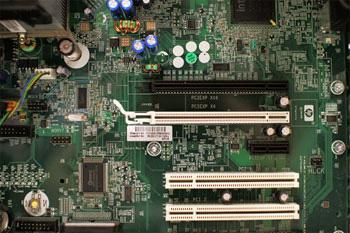
Software is any set of instructions that tells the hardware what to do and how to do it. Examples of software include web browsers, games, and word processors. Below, you can see an image of Microsoft PowerPoint, which is used to create presentations.
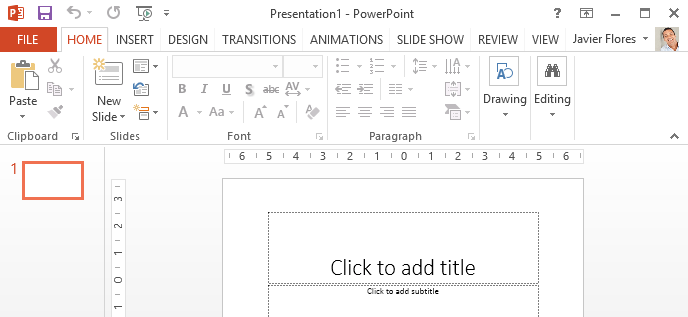
Everything you do on your computer will rely on both hardware and software. For example, right now you may be viewing this lesson in a web browser (software) and using your mouse (hardware) to click from page to page. As you learn about different types of computers, ask yourself about the differences in their hardware. As you progress through this tutorial, you'll see that different types of computers also often use different types of software.
What are the different types of computers?
When most people hear the word computer, they think of a personal computer such as a desktop or laptop. However, computers come in many shapes and sizes, and they perform many different functions in our daily lives. When you withdraw cash from an ATM, scan groceries at the store, or use a calculator, you're using a type of computer.
Desktop computers
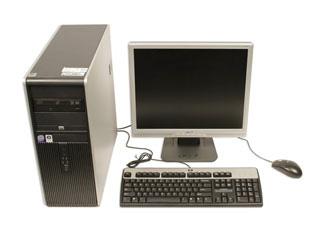
Many people use desktop computers at work, home, and school. Desktop computers are designed to be placed on a desk, and they're typically made up of a few different parts, including the computer case, monitor, keyboard, and mouse.
Laptop computers
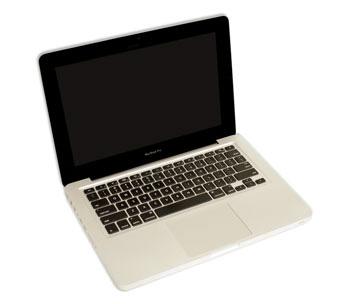
The second type of computer you may be familiar with is a laptop computer, commonly called a laptop. Laptops are battery-powered computers that are more portable than desktops, allowing you to use them almost anywhere.
Tablet computers
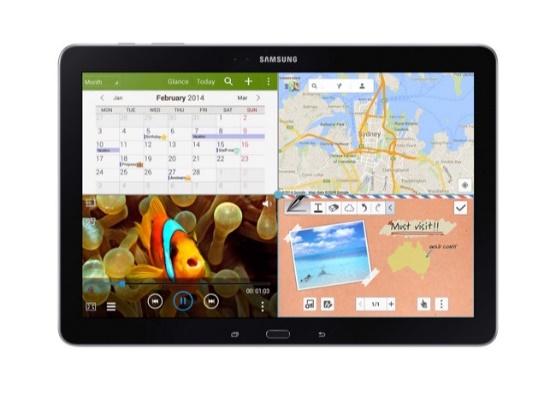
Tablet computers—or tablets—are handheld computers that are even more portable than laptops. Instead of a keyboard and mouse, tablets use a touch-sensitive screen for typing and navigation. The iPad is an example of a tablet.
Servers
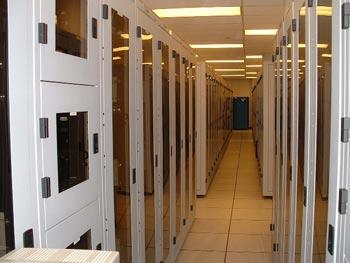
A server is a computer that serves up information to other computers on a network. For example, whenever you use the Internet, you're looking at something that's stored on a server. Many businesses also use local file servers to store and share files internally.
Other types of computers
Many of today's electronics are basically specialized computers, though we don't always think of them that way. Here are a few common examples.
Smartphones: Many cell phones can do a lot of things computers can do, including browsing the Internet and playing games. They are often called smartphones.
Wearables: Wearable technology is a general term for a group of devices—including fitness trackers and smartwatches—that are designed to be worn throughout the day. These devices are often called wearables for short.
Game consoles: A game console is a specialized type of computer that is used for playing video games on your TV.
TVs: Many TVs now include applications—or apps—that let you access various types of online content. For example, you can stream video from the Internet directly onto your TV.
PCs and Macs
Personal computers come in two main styles: PC and Mac. Both are fully functional, but they have a different look and feel, and many people prefer one or the other.
PCs
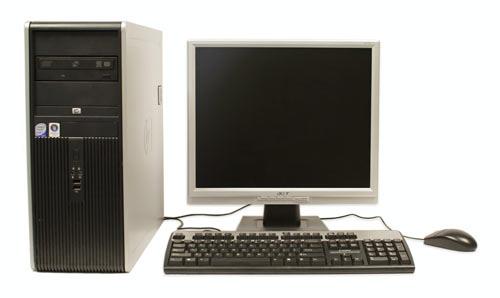
This type of computer began with the original IBM PC that was introduced in 1981. Other companies began creating similar computers, which were called IBM PC Compatible (often shortened to PC). Today, this is the most common type of personal computer, and it typically includes the Microsoft Windows operating system.
Macs

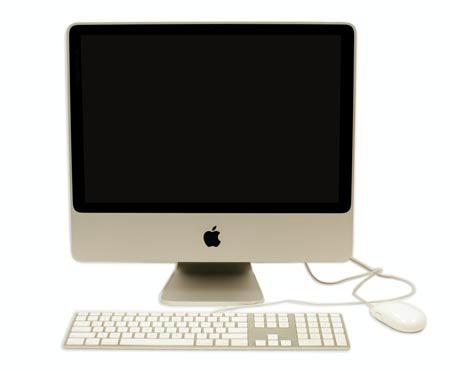
The Macintosh computer was introduced in 1984, and it was the first widely sold personal computer with a graphical user interface, or GUI (pronounced gooey). All Macs are made by one company (Apple), and they almost always use the Mac OS X operating system.
WHAT IS AN OPERATING SYSTEM?
Read and translate the text.
An operating system is the most important software that runs on a computer. It manages the computer's memory and processes, as well as all of its software and hardware. It also allows you to communicate with the computer without knowing how to speak the computer's language. Without an operating system, a computer is useless.
The operating system's job
Your computer's operating system (OS) manages all of the software and hardware on the computer. Most of the time, there are several different computer programs running at the same time, and they all need to access your computer's central processing unit (CPU), memory, and storage. The operating system coordinates all of this to make sure each program gets what it needs.
Types of operating systems
Operating systems usually come pre-loaded on any computer you buy. Most people use the operating system that comes with their computer, but it's possible to upgrade or even change operating systems. The three most common operating systems for personal computers are Microsoft Windows, Mac OS X, and Linux.
Modern operating systems use a graphical user interface, or GUI . A GUI lets you use your mouse to click icons, buttons, and menus, and everything is clearly displayed on the screen using a combination of graphics and text.
Each operating system's GUI has a different look and feel, so if you switch to a different operating system it may seem unfamiliar at first. However, modern operating systems are designed to be easy to use, and most of the basic principles are the same.
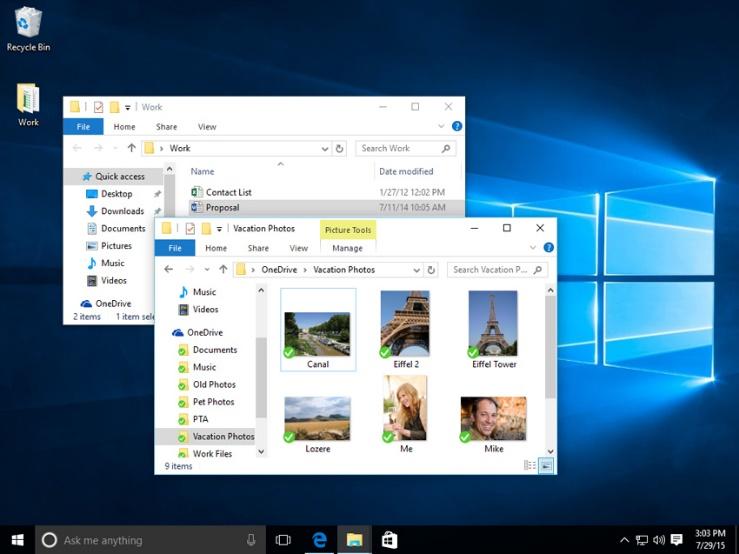
Microsoft Windows
Microsoft created the Windows operating system in the mid-1980s. Over the years, there have been many different versions of Windows, but the most recent ones are Windows 10 (released in 2015), Windows 8 (2012), Windows 7 (2009), and Windows Vista (2007). Windows comes pre-loaded on most new PCs, which helps to make it the most popular operating system in the world.

Mac OS X
Mac OS is a line of operating systems created by Apple. It comes preloaded on all new Macintosh computers, or Macs. All of the recent versions are known as OS X (pronounced O-S Ten), and the specific versions include El Capitan (released in 2015), Yosemite (2014), Mavericks (2013), Mountain Lion (2012), and Lion (2011).
According to Stat Counter Global Stats, Mac OS X users account for less than 10% of global operating systems—much lower than the percentage of Windows users (more than 80%). One reason for this is that Apple computers tend to be more expensive. However, many people do prefer the look and feel of Mac OS X over Windows.

Linux
Linux (pronounced LINN-ux) is a family of open-source operating systems, which means they can be modified and distributed by anyone around the world. This is different from proprietary software like Windows, which can only be modified by the company that owns it. The advantages of Linux are that it is free, and there are many different distributions—or versions—you can choose from.
According to Stat Counter Global Stats, Linux users account for less than 2% of global operating systems. However, most servers run Linux because it's relatively easy to customize.
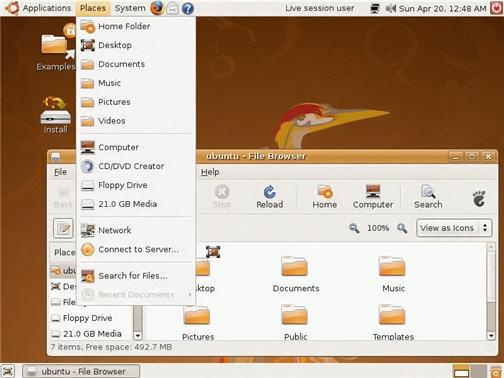
Operating systems for mobile devices
The operating systems we've been talking about so far were designed to run on desktop and laptop computers. Mobile devices such as phones, tablet computers, and MP3 players are different from desktop and laptop computers, so they run operating systems that are designed specifically for mobile devices. Examples of mobile operating systems include Apple iOS and Google Android. In the screenshot below, you can see iOS running on an iPad.

Operating systems for mobile devices generally aren't as fully featured as those made for desktop and laptop computers, and they aren't able to run all of the same software. However, you can still do a lot of things with them, like watch movies, browse the Web, manage your calendar, and play games.
- WHAT IS AN APPLICATION?
Read and translate the text.
You may have heard people talking about using a program, an application, or an app. But what exactly does that mean? Simply put, an app is a type of software that allows you to perform specific tasks. Applications for desktop or laptop computers are sometimes called desktop applications, while those for mobile devices are called mobile apps.
When you open an application, it runs inside the operating system until you close it. Most of the time, you will have more than one application open at the same time, which is known as multi-tasking.
App is a common term for an application, especially for simple applications that can be downloaded inexpensively or even for free. Many apps are also available for mobile devices and even some TVs.
Desktop applications
There are countless desktop applications, and they fall into several categories. Some are more full featured (like Microsoft Word), while others may only do one or two things (like a clock or calendar app). Below are just a few types of applications you might use.
• Word processors: A word processor allows you to write a letter, design a flyer, and create many other types of documents. The most well-known word processor is Microsoft Word.
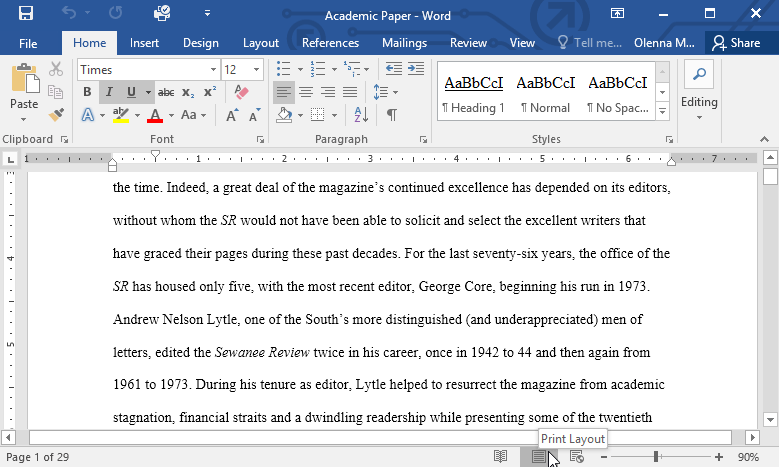
• Web browsers: A web browser is the tool you use to access the Internet. Most computers come with a web browser pre-installed, but you can also download a different one if you prefer. Examples of browsers include Internet Explorer, Mozilla Firefox, Google Chrome, and Safari.
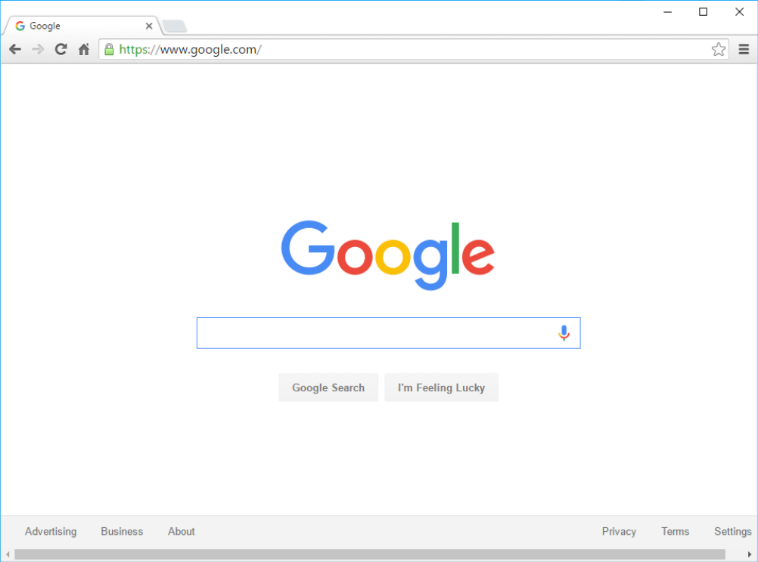
• Media players: If you want to listen to MP3s or watch movies you've downloaded, you'll need to use a media player. Windows Media Player and iTunes are popular media players.
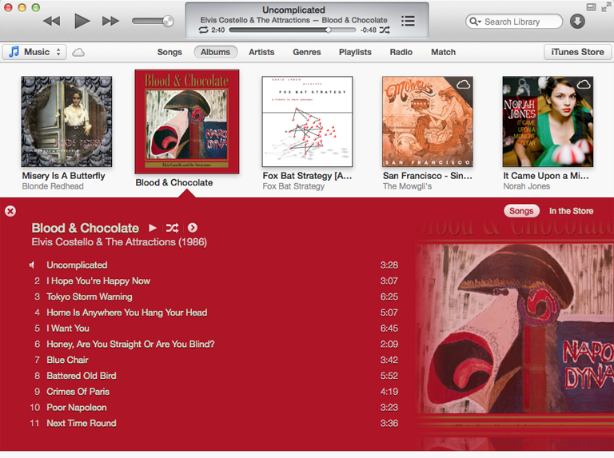
• Games: There are many types of games you can play on your computer. They range from card games like Solitaire to action games like Halo. Many action games require a lot of computing power, so they may not work unless you have a newer computer.
Mobile apps
Desktop and laptop computers aren't the only devices that can run applications. You can also download apps for mobile devices like smartphones and tablets. Here are a few examples of mobile apps.
• Gmail: You can use the Gmail app to easily view and send emails from your mobile device. It's available for Android and iOS devices.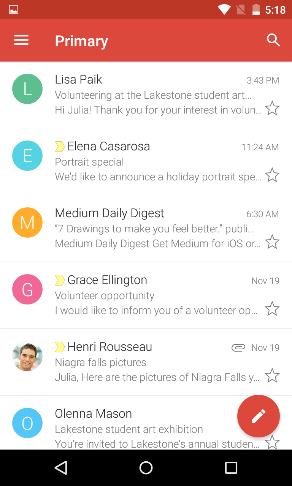
• Instagram: You can use Instagram to quickly share photos with your friends and family. It's available for Android and iOS.
• Duolingo: With a combination of quizzes, games, and other activities, this app can help you learn new languages. It's available for Android and iOS.
Installing new applications
Every computer and mobile device will come with some applications already built in, such as a web browser and media player. However, you can also purchase and install new apps to add more functionality. You can review our lessons on Installing Software on Your Windows PC, Installing Software on Your Mac, and Free Software to learn more.
- WORD PROCESSORS
Read and translate the text.
Microsoft Word is a word processor developed by Microsoft. It was first released on October 25, 1983 under the name Multi-Tool Word for Xenix systems. Subsequent versions were later written for several other platforms including IBM PCs running DOS (1983), Apple Macintosh running Classic Mac OS (1985), AT&T Unix PC (1985), Atari ST (1988), OS/2 (1989), Microsoft Windows (1989), SCO Unix (1994), and macOS (2001). Commercial versions of Word are licensed as a standalone product or as a component of Microsoft Office. Microsoft Word Viewer and Office Online are freeware editions of Word with limited features.
In 1981, Microsoft hired Charles Simonyi, the primary developer of Bravo, the first GUI word processor, which was developed at Xerox PARC. Simonyi started work on a word processor called Multi-Tool Word.
Microsoft announced Multi-Tool Word for Xenix and MS-DOS in 1983. Its name was soon simplified to Microsoft Word.
In 1985, Microsoft ported Word to Mac OS. This was made easier by Word for DOS having been designed for use with high-resolution displays and laser printers.
The second release of Word for Mac OS, shipped in 1987, was named Word 3.0 to synchronize its version number with Word for DOS; this was Microsoft's first attempt to synchronize version numbers across platforms.
In 1986, an agreement between Atari and Microsoft brought Word to the Atari ST under the name Microsoft Write.
The first version of Word for Windows was released in 1989. With the release of Windows 3.0 the following year, sales began to pick up and Microsoft soon became the market leader for word processors for IBM PC-compatible computers. When Microsoft became aware of the Year 2000 problem, it made Microsoft Word 5.5 for DOS available for download free. As of March 2014, it is still available for download from Microsoft's web site.
In 1997, Microsoft formed the Macintosh Business Unit as an independent group within Microsoft focused on writing software for Mac OS. Its first version of Word, Word 98, was released with Office 98 Macintosh Edition. Document compatibility reached parity with Word 97, and it included features from Word 97 for Windows, including spell and grammar checking with squiggles.
Word 2001, released in 2000, added a few new features, including the Office Clipboard, which allowed users to copy and paste multiple items. It was the last version to run on classic Mac OS and, on Mac OS X, it could only run within the Classic Environment. Word X, released in 2001, was the first version to run natively on, and required, Mac OS X, and introduced non-contiguous text selection.
Office 2003 is Microsoft Corp.'s latest version of its popular business software suite. The Office 2003 suite, or group, of software programs is used in home and office settings to accomplish a variety of computing tasks.
You may already be familiar with previous versions of Microsoft Office such as Microsoft Office 97, Microsoft Office 2000, or Microsoft 2002 (XP). In this course, you'll master basic skills common to programs in Office 2003 Standard, including Word (word-processing application), Excel (spreadsheet application), Outlook (email application), and PowerPoint (presentation application).
Word 2004 was released in May 2004. It included a new Notebook Layout view for taking notes either by typing or by voice. Other features, such as tracking changes, were made more similar with Office for Windows.
Microsoft Word 2007
Word for Windows is available stand-alone or as part of the Microsoft Office suite. Word contains rudimentary desktop publishing capabilities and is the most widely used word processing program on the market. Word files are commonly used as the format for sending text documents via e-mail because almost every user with a computer can read a Word document by using the Word application, a Word viewer or a word processor that imports the Word format.
Word 2008, released on January 15, 2008, included a Ribbon-like feature, called the Elements Gallery, that can be used to select page layouts and insert custom diagrams and images. It also included a new view focused on publishing layout, integrated bibliography management, and native support for the new Office Open XML format. It was the first version to run natively on Intel-based Macs.
Word 2010 allows more customization of the Ribbon, adds a Backstage view for file management, has improved document navigation, allows creation and embedding of screenshots, and integrates with Word Web App.
Word 2011, released in October 2010, replaced the Elements Gallery in favor of a Ribbon user interface that is much more similar to Office for Windows, and includes a full-screen mode that allows users to focus on reading and writing documents, and support for Office Web Apps.
In January 2013, Microsoft released the latest version of its Office software suite, Office 2013. It also released Office 365 Home, a subscription-based version of Office. If you're thinking of purchasing or upgrading to Office 2013, there are several factors to consider, including the cost and features of each version.
The Microsoft Office suite is an essential collection of applications that includes Word, Excel, PowerPoint, and much more. Office 2013, the latest version of the Office suite, includes some significant changes. Microsoft is now offering Office through a yearly subscription plan, and the company has heavily integrated it with its Microsoft account and OneDrive. Therefore, it's important to understand the different services and available purchasing options before you buy.
Microsoft Word 2016 is a word processing application that allows you to create a variety of documents, including letters, resumes, and more. In this lesson, you'll learn how to navigate the Word interface and become familiar with some of its most important features, such as the Ribbon, Quick Access Toolbar, and Backstage view.
Word 2016 is similar to Word 2013 and Word 2010. If you've previously used either version, then Word 2016 should feel familiar. But if you are new to Word or have more experience with older versions, you should first take some time to become familiar with the Word 2016 interface.
File extensions
Microsoft Word's native file formats are denoted either by a .doc or .docx filename extension.
Although the .doc extension has been used in many different versions of Word, it actually encompasses four distinct file formats:
Word for DOS
Word for Windows 1 and 2; Word 3 and 4 for Mac OS
Word 6 and Word 95 for Windows; Word 6 for Mac OS
Word 97 and later for Windows; Word 98 and later for Mac OS
The newer .docx extension signifies the Office Open XML international standard for Office documents and is used by Word 2007 and later for Windows, Word 2008 and later for macOS, as well as by a growing number of applications from other vendors, including OpenOffice.org Writer, an open source word processing program.
- COMPUTER GRAPHICS
Read and translate the text.
Computer graphics is an art of drawing pictures on computer screens with the help of programming. It involves computations, creation, and manipulation of data. In other words, we can say that computer graphics is a rendering tool for the generation and manipulation of images.
Cathode Ray Tube
The primary output device in a graphical system is the video monitor. The main element of a video monitor is the Cathode Ray Tube (CRT), shown in the following illustration.
The operation of CRT is very simple −
The electron gun emits a beam of electrons (cathode rays).
The electron beam passes through focusing and deflection systems that direct it towards specified positions on the phosphor-coated screen.
When the beam hits the screen, the phosphor emits a small spot of light at each position contacted by the electron beam.
It redraws the picture by directing the electron beam back over the same screen points quickly.
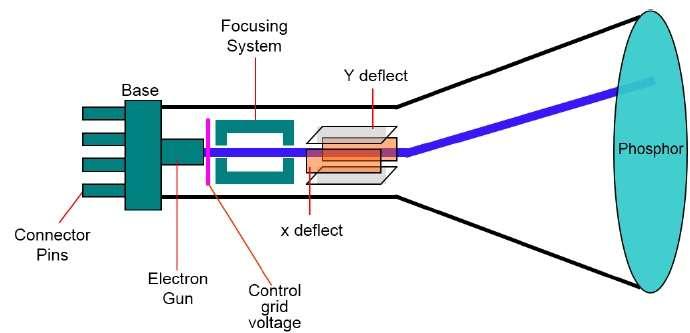

There are two ways (Random scan and Raster scan) by which we can display an object on the screen.
Raster Scan
In a raster scan system, the electron beam is swept across the screen, one row at a time from top to bottom. As the electron beam moves across each row, the beam intensity is turned on and off to create a pattern of illuminated spots.
Picture definition is stored in memory area called the Refresh Buffer or Frame Buffer. This memory area holds the set of intensity values for all the screen points. Stored intensity values are then retrieved from the refresh buffer and “painted” on the screen one row (scan line) at a time as shown in the following illustration.
Each screen point is referred to as a pixel (picture element) or pel. At the end of each scan line, the electron beam returns to the left side of the screen to begin displaying the next scan line.

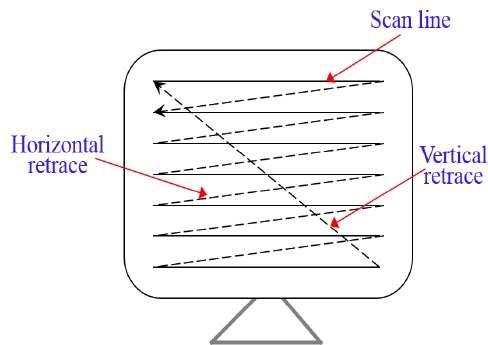
Random Scan (Vector Scan)
In this technique, the electron beam is directed only to the part of the screen where the picture is to be drawn rather than scanning from left to right and top to bottom as in raster scan. It is also called vector display, stroke-writing display, or calligraphic display.
Picture definition is stored as a set of line-drawing commands in an area of memory referred to as the refresh display file. To display a specified picture, the system cycles through the set of commands in the display file, drawing each component line in turn. After all the line-drawing commands are processed, the system cycles back to the first line command in the list.
Random-scan displays are designed to draw all the component lines of a picture 30 to 60 times each second.

Application of Computer Graphics
Computer Graphics has numerous applications, some of which are listed below −
Computer graphics user interfaces (GUIs) − A graphic, mouse-oriented paradigm which allows the user to interact with a computer.
Business presentation graphics − "A picture is worth a thousand words".
Cartography − Drawing maps.
Weather Maps − Real-time mapping, symbolic representations.
Satellite Imaging − Geodesic images.
Photo Enhancement − Sharpening blurred photos.
Medical imaging − MRIs, CAT scans, etc. - Non-invasive internal examination.
Engineering drawings − mechanical, electrical, civil, etc. - Replacing the blueprints of the past.
Typography − The use of character images in publishing - replacing the hard type of the past.
Architecture − Construction plans, exterior sketches - replacing the blueprints and hand drawings of the past.
Art − Computers provide a new medium for artists.
Training − Flight simulators, computer aided instruction, etc.
Entertainment − Movies and games.
Simulation and modeling − Replacing physical modeling and enactments.
- WHAT IS WEB DESIGN?
Read and translate the text.
Design is the process of collecting ideas, and aesthetically arranging and implementing them, guided by certain principles for a specific purpose. Web design is a similar process of creation, with the intention of presenting the content on electronic web pages, which the end-users can access through the internet with the help of a web browser.
Elements of Web Design
Web design uses many of the same key visual elements as all types of design such as:
Layout: This is the way the graphics, ads and text are arranged. In the web world, a key goal is to help the view find the information they seek at a glance. This includes maintaining the balance, consistency, and integrity of the design.
Colour: The choice of colours depends on the purpose and clientele; it could be simple black-and-white to multi-coloured design, conveying the personality of a person or the brand of an organization, using web-safe colours.
Graphics: Graphics can include logos, photos, clipart or icons, all of which enhance the web design. For user friendliness, these need to be placed appropriately, working with the colour and content of the web page, while not making it too congested or slow to load.
Fonts: The use of various fonts can enhance a website design. Most web browsers can only read a select number of fonts, known as "web-safe fonts", so your designer will generally work within this widely accepted group.
Content: Content and design can work together to enhance the message of the site through visuals and text. Written text should always be relevant and useful, so as not to confuse the reader and to give them what they want so they will remain on the site. Content should be optimized for search engines and be of a suitable length, incorporating relevant keywords.
Creating User-Friendly Web Design
Besides the basic elements of web design that make a site beautiful and visually compelling, a website must also always consider the end user. User-friendliness can be achieved by paying attention to the following factors.
Navigation: Site architecture, menus and other navigation tools in the web design must be created with consideration of how users browse and search. The goal is to help the user to move around the site with ease, efficiently finding the information they require.
Multimedia: Relevant video and audio stimuli in the design can help users to grasp the information, developing understanding in an easy and quick manner. This can encourage visitors to spend more time on the webpage.
Compatibility: Design the webpage, to perform equally well on different browsers and operating systems, to increase its viewing.
Technology: Advancements in technology give designers the freedom to add movement and innovation, allowing for web design that is always fresh, dynamic and professional.
Interactive: Increase active user participation and involvement, by adding comment boxes and opinion polls in the design. Convert users from visitors to clients with email forms and newsletter sign-ups.
Toronto web design professionals create excellent User Interface (UI) Design for a satisfying web experience. They use critical planning and analysis for the design and they pay attention to individual client specifications, converting the intricate process into a simple and elegant piece of art.
- APPEARING OF THE INTERNET
Read and translate the text.
Unlike technologies such as the light bulb or the telephone, the Internet has no single “inventor.” Instead, it has evolved over time. The Internet got its start in the United States more than 50 years ago as a government weapon in the Cold War. For years, scientists and researchers used it to communicate and share data with one another. Today, we use the Internet for almost everything, and for many people it would be impossible to imagine life without it.
THE SPUTNIK SCARE
On October 4, 1957, the Soviet Union launched the world’s first manmade satellite into orbit. The satellite, known as Sputnik, did not do much: It tumbled aimlessly around in outer space, sending blips and bleeps from its radio transmitters as it circled the Earth. Still, to many Americans, the beach-ball-sized Sputnik was proof of something alarming: While the brightest scientists and engineers in the United States had been designing bigger cars and better television sets, it seemed, the Soviets had been focusing on less frivolous things—and they were going to win the Cold War because of it.
Did You Know?
Today, almost one-third of the world’s 6.8 billion people use the Internet regularly.
After Sputnik’s launch, many Americans began to think more seriously about science and technology. Schools added courses on subjects like chemistry, physics and calculus. Corporations took government grants and invested them in scientific research and development. And the federal government itself formed new agencies, such as the National Aeronautics and Space Administration (NASA) and the Department of Defense’s Advanced Research Projects Agency (ARPA), to develop space-age technologies such as rockets, weapons and computers.
THE BIRTH OF THE ARPANET
Scientists and military experts were especially concerned about what might happen in the event of a Soviet attack on the nation’s telephone system. Just one missile, they feared, could destroy the whole network of lines and wires that made efficient long-distance communication possible. In 1962, a scientist from M.I.T. and ARPA named J.C.R. Licklider proposed a solution to this problem: a “galactic network” of computers that could talk to one another. Such a network would enable government leaders to communicate even if the Soviets destroyed the telephone system.
In 1965, another M.I.T. scientist developed a way of sending information from one computer to another that he called “packet switching.” Packet switching breaks data down into blocks, or packets, before sending it to its destination. That way, each packet can take its own route from place to place. Without packet switching, the government’s computer network—now known as the ARPAnet—would have been just as vulnerable to enemy attacks as the phone system.
“LOGIN”
In 1969, ARPAnet delivered its first message: a “node-to-node” communication from one computer to another. (The first computer was located in a research lab at UCLA and the second was at Stanford; each one was the size of a small house.) The message—“LOGIN”—was short and simple, but it crashed the fledgling ARPA network anyway: The Stanford computer only received the note’s first two letters.
THE NETWORK GROWS
By the end of 1969, just four computers were connected to the ARPAnet, but the network grew steadily during the 1970s. In 1971, it added the University of Hawaii’s ALOHAnet, and two years later it added networks at London’s University College and the Royal Radar Establishment in Norway. As packet-switched computer networks multiplied, however, it became more difficult for them to integrate into a single worldwide “Internet.”
By the end of the 1970s, a computer scientist named Vinton Cerf had begun to solve this problem by developing a way for all of the computers on all of the world’s mini-networks to communicate with one another. He called his invention “Transmission Control Protocol,” or TCP. (Later, he added an additional protocol, known as “Internet Protocol.” The acronym we use to refer to these today is TCP/IP.) One writer describes Cerf’s protocol as “the ‘handshake’ that introduces distant and different computers to each other in a virtual space.”
THE WORLD WIDE WEB
Cerf’s protocol transformed the Internet into a worldwide network. Throughout the 1980s, researchers and scientists used it to send files and data from one computer to another. However, in 1991 the Internet changed again. That year, a computer programmer in Switzerland named Tim Berners-Lee introduced the World Wide Web: An Internet that was not simply a way to send files from one place to another but was itself a “web” of information that anyone on the Internet could retrieve. Berners-Lee created the Internet that we know today.
Since then, the Internet has changed in many ways. In 1992, a group of students and researchers at the University of Illinois developed a sophisticated browser that they called Mosaic. (It later became Netscape.) Mosaic offered a user-friendly way to search the Web: It allowed users to see words and pictures on the same page for the first time and to navigate using scrollbars and clickable links. That same year, Congress decided that the Web could be used for commercial purposes. As a result, companies of all kinds hurried to set up websites of their own, and e-commerce entrepreneurs began to use the Internet to sell goods directly to customers. More recently, social networking sites like Facebook have become a popular way for people of all ages to stay connected.
- INTERNET SERVICE AND INTERNET SAFETY
Read and translate the text.
How do I connect to the Internet?
Once you've set up your computer, you may want to purchase home Internet access so you can send and receive email, browse the Web, stream videos, and more. You may even want to set up a home wireless network, commonly known as Wi-Fi, so you can connect multiple devices to the Internet at the same time.
Types of Internet service
The type of Internet service you choose will largely depend on which Internet service providers (ISPs) serve your area, along with the types of service they offer. Here are some common types of Internet service.
Dial-up: This is generally the slowest type of Internet connection, and you should probably avoid it unless it is the only service available in your area. Dial-up Internet uses your phone line, so unless you have multiple phone lines you will not be able to use your landline and the Internet at the same time.
DSL: DSL service uses a broadband connection, which makes it much faster than dial-up. DSL connects to the Internet via a phone line but does not require you to have a landline at home. And unlike dial-up, you'll be able to use the Internet and your phone line at the same time.
Cable: Cable service connects to the Internet via cable TV, although you do not necessarily need to have cable TV in order to get it. It uses a broadband connection and can be faster than both dial-up and DSL service; however, it is only available where cable TV is available.
Satellite: A satellite connection uses broadband but does not require cable or phone lines; it connects to the Internet through satellites orbiting the Earth. As a result, it can be used almost anywhere in the world, but the connection may be affected by weather patterns. Satellite connections are also usually slower than DSL or cable.
3G and 4G: 3G and 4G service is most commonly used with mobile phones, and it connects wirelessly through your ISP's network. However, these types of connections aren't always as fast as DSL or cable. They will also limit the amount of data you can use each month, which isn't the case with most broadband plans.
Choosing an Internet service provider
Now that you know about the different types of Internet service, you can do some research to find out what ISPs are available in your area. If you're having trouble getting started, we recommend talking to friends, family members, and neighbors about the ISPs they use. This will usually give you a good idea of the types of Internet service available in your area.
Most ISPs offer several tiers of service with different Internet speeds, usually measured in Mbps (short for megabits per second). If you mainly want to use the Internet for email and social networking, a slower connection (around 2 to 5 Mbps) might be all you need. However, if you want to download music or stream videos, you'll want a faster connection (at least 5 Mbps or higher).
You'll also want to consider the cost of the service, including installation charges and monthly fees. Generally speaking, the faster the connection, the more expensive it will be per month.
Although dial-up has traditionally been the least expensive option, many ISPs have raised dial-up prices to be the same as broadband. This is intended to encourage people to switch to broadband. We do not recommend dial-up Internet unless it's your only option.
Hardware needed
Modem
Once you have your computer, you really don't need much additional hardware to connect to the Internet. The primary piece of hardware you need is a modem.
The type of Internet access you choose will determine the type of modem you need. Dial-up access uses a telephone modem, DSL service uses a DSL modem, cable access uses a cable modem, and satellite service uses a satellite adapter. Your ISP may give you a modem—often for a fee—when you sign a contract, which helps ensure that you have the right type of modem. However, if you would prefer to shop for a better or less expensive modem, you can choose to buy one separately.
Router
A router is a hardware device that allows you to connect several computers and other devices to a single Internet connection, which is known as a home network. Many routers are wireless, which allows you to create a home wireless network, commonly known as a Wi-Fi network.
You don't necessarily need to buy a router to connect to the Internet. It's possible to connect your computer directly to your modem using an Ethernet cable. Also, many modems include a built-in router, so you have the option of creating a Wi-Fi network without buying extra hardware.
Setting up your Internet connection
Once you've chosen an ISP, most providers will send a technician to your house to turn on the connection. If not, you should be able to use the instructions provided by your ISP—or included with the modem—to set up your Internet connection.
After you have everything set up, you can open your web browser and begin using the Internet. If you have any problems with your Internet connection, you can call your ISP's technical support number.
Home networking
If you have multiple computers at home and want to use all of them to access the Internet, you may want to create a home network, also known as a Wi-Fi network. In a home network, all of your devices connect to your router, which is connected to the modem. This means everyone in your family can use the Internet at the same time.
Your ISP technician may be able to set up a home Wi-Fi network when installing your Internet service. If not, you can review our lesson on How to Set Up a Wi-Fi Network to learn more.
If you want to connect a computer that does not have built-in Wi-Fi connectivity, you can purchase a Wi-Fi adapter that plugs into your computer's USB port.
Introduction to Internet safety
There's almost no limit to what you can do online. The Internet makes it possible to access information quickly, communicate around the world, and much more. Unfortunately, the Internet is also home to certain risks, such as malware, spam, and phishing. If you want to stay safe online, you'll need to understand these risks and learn how to avoid them.
Adopting a safer mindset
Computers can often give us a false sense of security. After all, no one can physically harm you through a computer screen. But to stay safe online, you'll want to take a more cautious approach. Here's one way to think about it: Treat the Internet as you would a shopping mall.
Most people don't consider a mall to be an especially dangerous place. You can go there to shop and meet up with friends. But there are also small things you may do to stay safe, even if you don't think about them very often. For example, you probably wouldn't leave your car unlocked or give your credit card number to a stranger.
Apply this same mindset whenever you're online. You shouldn't be afraid to use the Internet, but remember that it comes with many of the same risks you'd face in the real world. Throughout this tutorial, we'll show you how to prepare for these risks so you can be online without putting yourself in danger.
Hacker is a term used by some to mean "a clever programmer" and by others, especially those in popular media, to mean "someone who tries to break into computer systems."
1) Eric Raymond, compiler of The New Hacker's Dictionary, defines a hacker as a clever programmer. A "good hack" is a clever solution to a programming problem and "hacking" is the act of doing it. Raymond lists five possible characteristics that qualify one as a hacker, which we paraphrase here:
• A person who enjoys learning details of a programming language or system
• A person who enjoys actually doing the programming rather than just theorizing about it
• A person capable of appreciating someone else's hacking
• A person who picks up programming quickly
• A person who is an expert at a particular programming language or system, as in "UNIX hacker"
Raymond deprecates the use of this term for someone who attempts to crack someone else's system or otherwise uses programming or expert knowledge to act maliciously. He prefers the term cracker for this meaning.
2) The term hacker is used in popular media to describe someone who attempts to break into computer systems. Typically, this kind of hacker would be a proficient programmer or engineer with sufficient technical knowledge to understand the weak points in a security system.
A cracker is someone who breaks into someone else's computer system, often on a network; bypasses passwords or licenses in computer programs; or in other ways intentionally breaches computer security. A cracker can be doing this for profit, maliciously, for some altruistic purpose or cause, or because the challenge is there. Some breaking-and-entering has been done ostensibly to point out weaknesses in a site's security system.
The term "cracker" is not to be confused with "hacker". Hackers generally deplore cracking. However, as Eric Raymond, compiler of The New Hacker's Dictionary notes, some journalists ascribe break-ins to "hackers."
A classic story of the tracking down of a cracker on the Internet who was breaking into U.S. military and other computers is told in Clifford Stoll's The Cuckoo's Egg.
- THE WORLD’S FIRST WEB SITE
Read and translate the text.
In a world where there are more than 1 billion websites, it can be hard to believe there was a time with just one. That was the case on August 6, 1991, when, without fanfare, British computer scientist Tim Berners-Lee published the first-ever website while working at CERN, the huge particle physics lab in Switzerland. Within a decade, sites such as eBay, Amazon and Google had debuted and the Web was revolutionizing society by changing how people communicate, shop and get information.
The son of computer scientists, Berners-Lee was born in London in 1955 (the same year as Steve Jobs and Bill Gates) and studied physics at Oxford. While employed at CERN in the 1980s, Berners-Lee observed how tough it was to keep track of the projects and computer systems of the organization’s thousands of researchers, who were spread around the globe. As he later stated: “In those days, there was different information on different computers, but you had to log on to different computers to get at it. Also, sometimes you had to learn a different program on each computer.”
This computer was used at CERN by British scientist Tim Berners-Lee to devise the World Wide Web (WWW). In March 1989, Berners-Lee gave managers at CERN a proposal for an information management system that used hypertext to link documents on different computers that were connected to the Internet. (Hypertext, a term coined in 1963, allows a person to get a document or piece of content by clicking on a coded word or phrase.) Labelled “vague but exciting” by his boss, the proposal at first wasn’t accepted. Berners-Lee teamed up with Robert Cailliau, a Belgian engineer at CERN, to refine the proposal, and in 1990 the Englishman’s boss gave him time to work on the project. After originally calling the project Information Management, Berners-Lee tried out names such as Mine of Information and Information Mesh before settling on WorldWideWeb.
By the end of 1990, Berners-Lee, using a Steve Jobs-designed NeXT computer, had developed the key technologies that are the bedrock of the Web, including Hypertext Markup Language (HTML), for creating Web pages; Hypertext Transfer Protocol (HTTP), a set of rules for transferring data across the Web; and Uniform Resource Locators (URLs), or Web addresses for finding a document or page. He also had devised a basic browser and Web server software.
The beginning of the Web as a publicly available service on the Internet arrived on August 6, 1991, when Berners-Lee published the first-ever website. Fittingly, the site was about the World Wide Web project, describing the Web and how to use it. Hosted at CERN on Berners-Lee’s NeXT computer, the site’s URL was http://info.cern.ch.
Berners-Lee didn’t try to cash in on his invention and rejected CERN’s call to patent his Web technology. He wanted the Web to be open and free so it could expand and evolve as rapidly as possible. As he later said, “Had the technology been proprietary, and in my total control, it would probably not have taken off. You can’t propose that something be a universal space and at the same time keep control of it.”
In 1993, a team at the University of Illinois’ National Center for Supercomputing Applications released Mosaic, the first Web browser to become popular with the general public. The next few years saw the launch of such websites as Yahoo (1994), Amazon (1995), eBay (1995) and Google (1998). By the time Facebook debuted in 2004, there were more than 51 million websites, according to Internet Live Stats.
Meanwhile, in 1994, Berners-Lee left CERN for the Massachusetts Institute of Technology, where he founded the World Wide Web Consortium (W3C), an organization that maintains standards for the Web. The low-profile visionary went on to be named one of Time Magazine’s 100 Most Important People of the 20th Century, and in 2004 was knighted by Queen Elizabeth II. In 2009, Berners-Lee started the World Wide Web Foundation, an organization focused on ensuring the Web benefits humanity. During the opening ceremony at the 2012 Summer Olympics in London, he was honored for inventing the Web and tweeted, “This is for everyone.”
Литературные источники:
Collin Peter Publishing. Check Your Vocabulary for Computing - A Workbook for Users, 2nd Edition. — Peter Collin Publishing, 1999.
Esteras S.R., Fabre E.M. Professional English in Use: Computers and Internet (Intermediate & Advanced), Cambridge,
2007.Riley David. Test your Vocabulary for Computing. A Workbook for Users, Great Britain, Peter Collin Publishing Ltd, 1995.
Головина Т.А. Английская грамматика для юзеров, Дзержинск, ХОВРА, 2015.
Смирнова Т.В., Юдельсон М.В. English For Computer Science Students, Учебное пособие. — 8-е изд., стер. — М.: ФЛИНТА, 2012. — 128 с.
Интернет-источники:
http://www.history.com/topics/inventions/invention-of-the-internet
http://www.gcflearnfree.org/computerbasics/understanding-applications/1/
https://www.tutorialspoint.com/computer_graphics/computer_graphics_basics.htm
http://www.gcflearnfree.org/computerbasics/connecting-to-the-internet/1/
http://www.gcflearnfree.org/computerbasics/understanding-operating-systems/1/
http://www.history.com/news/the-worlds-first-web-site
https://www.treefrog.ca/what-is-web-design
https://en.wikipedia.org/wiki/Microsoft_Word

 Получите свидетельство
Получите свидетельство Вход
Вход












 Тексты для специальности «Информационные системы» (1.8 MB)
Тексты для специальности «Информационные системы» (1.8 MB)
 0
0 5501
5501 347
347 Нравится
0
Нравится
0


